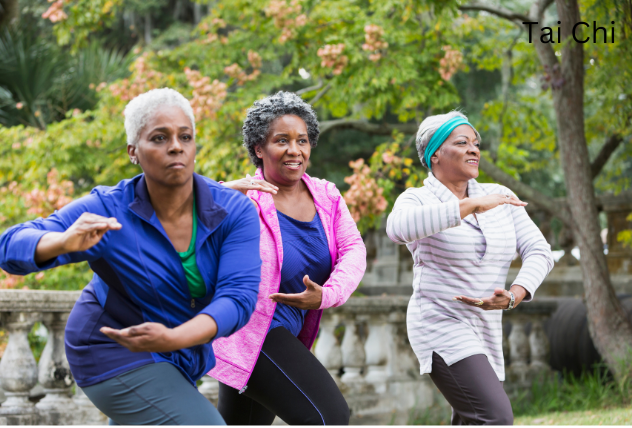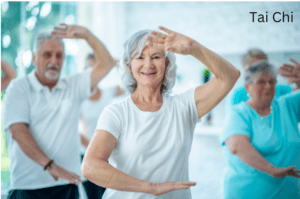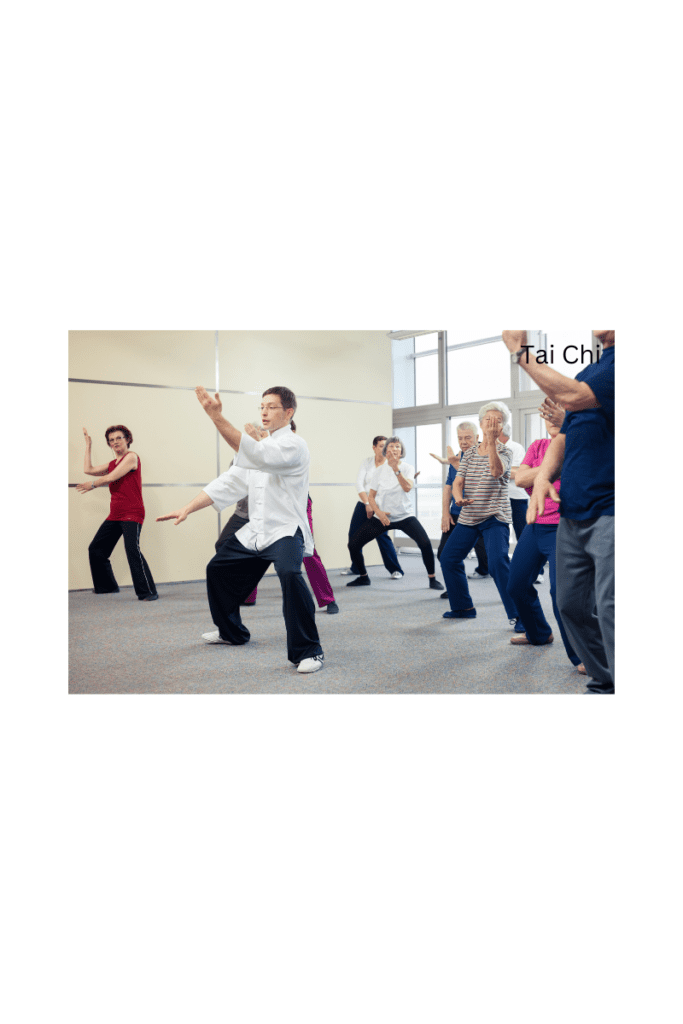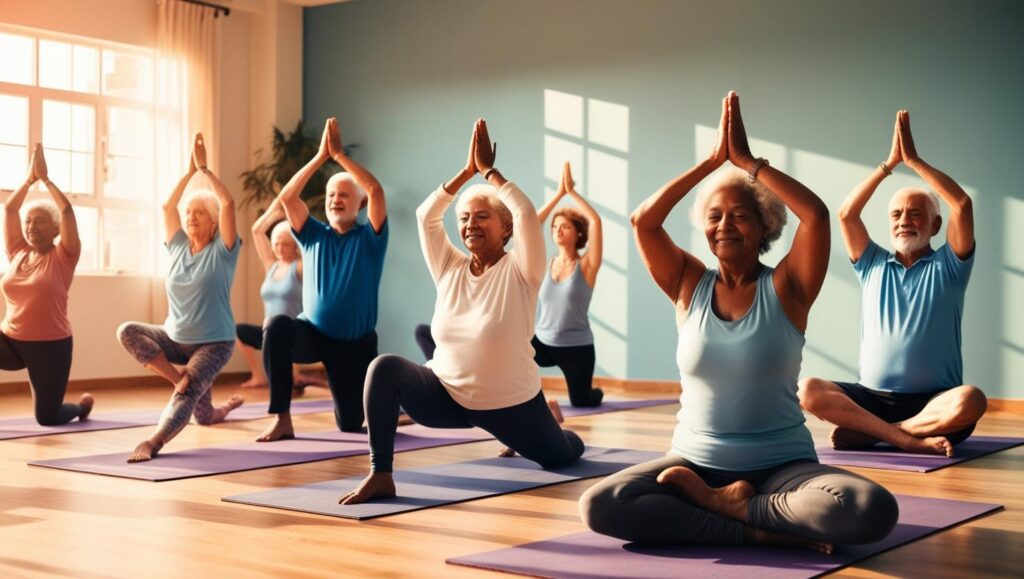
Ah, the classic showdown: Tai Chi versus Yoga. When it comes to senior-friendly practices, these two often top the charts. Both have rich histories, unique benefits, and a knack for promoting wellness.
Staying active in your golden years isn’t just beneficial; it’s vital. Keeping the body and mind engaged is key to maintaining health, warding off diseases, and keeping spirits high. Whether it’s stretching, balancing, or simply grooving to the rhythm of life, movement matters.
Tai Chi and Yoga both offer incredible pathways to wellness. With gentle movements and a focus on mindfulness, they’re perfect for seniors looking to stay in shape without hitting the gym hard.
Each practice comes with its perks and quirks. Whether you thrive in calm, flowing movements or enjoy balancing strength with flexibility, there’s something for everyone here. The challenge? Figuring out which one fits your lifestyle best.
In this guide, I’ll be your companion in exploring these practices. Discover what aligns with your needs and goals—your new fitness journey might just be a few slow, mindful steps away.
Tai Chi: A Gentle Approach to Inner Harmony
Originating in the mists of ancient China, Tai Chi is a serious game-changer for seniors. Often likened to ‘meditation in motion,’ it’s all about slow, flowing movements that connect the mind and body in a seamless dance. Think of it as your secret weapon for staying balanced and centered.
We’re talking real benefits here. Tai Chi boosts flexibility and balance, which is golden for avoiding those pesky falls. It’s like giving your joints a gentle pep talk every time you practice. Plus, there’s a bonus: the calming, stress-busting vibes are unbeatable. It’s your mini-vacation in motion!
Yet, it’s fair to ask—are there any downsides? While Tai Chi is generally safe, there’s an unwritten rule of sticking with a qualified instructor, especially if you’re dealing with existing health quirks. It ensures you’re getting the most from your practice without any unnecessary strain.
For those curious about doctor endorsements, more and more are giving Tai Chi the thumbs up. Its benefits aren’t just whispers in the wellness community; they’re backed by heaps of encouraging studies pointing towards improved mobility and quality of life for seniors.
Choosing a Tai Chi style might sound puzzling with several options like Yang and Chen, but don’t stress. For seniors, the Yang style is often recommended for its easy-going vibe and gentle moves. It’s like the gentle wave of a hand calling you to try something new without any pressure.
Eager to try Tai Chi? Think of it as an adventure—one that’s kind on your joints but spectacular for your soul. Plug into a local class or grab a DVD to get started, and remember, it’s all about the journey towards inner balance.
Yoga: Strengthening the Mind-Body Connection
Yoga, with its roots stretching back to ancient India, offers a special kind of magic for seniors. It’s all about finding harmony between the body, mind, and spirit, which makes it a fabulous choice for anyone embracing their golden years with grace.
Yoga shines in many areas, especially when it comes to boosting strength and flexibility. Ever seen those amazing yoga poses and thought, “Wow, I need some of that in my life”? That’s because yoga really does work wonders on your muscles and joints, making them stronger and more pliable.
Let’s talk stress—yoga tackles it with flair. Practicing yoga isn’t just about the asanas (the physical postures); it’s about breathwork and mindfulness too. It’s like giving yourself a mental tune-up while flexing those muscles, so your mind feels as light as your body.
Of course, you might be wondering about the risks. While yoga is generally safe, there are poses that can be a bit tricky, especially if you’re new or have health concerns. It’s all about knowing your body and taking it slow. Instructors always suggest modifying poses, using props, or choosing styles like hatha or yin yoga, which are super friendly for seniors.
Exploring the world of yoga might lead you to different styles, from the energetic flow of vinyasa to the relaxing vibes of restorative yoga. The key is to find what clicks with you. Trying a gentle style can ease you into yoga’s many benefits without overwhelming you.
The beauty of yoga is its adaptability—it fits gently into your lifestyle, offering peace and strength in equal measure. Whatever your reason, stepping onto the mat means opening a gateway to better posture, improved alignment, and a more balanced life.
Comparing Tai Chi and Yoga: Key Differences and Similarities
Both Tai Chi and Yoga shine when it comes to blending body movements with mindful breathing. They’re like the dynamic duo of wellness, offering a powerful mix of physical benefits and mental serenity. Yet, peeling back the layers reveals some interesting differences and similarities worth noting.
Starting with similarities, both practices are rooted in ancient wisdom and focus on enhancing the mind-body connection. They are low-impact, making them kind to those precious joints and ideal for seniors. With a common goal of promoting inner balance and concentration, they each bring a unique flavor to personal health journeys.
The differences kick in with their techniques. Tai Chi flows with continuous, connected movements. It’s like a serene dance, designed to harmonize energy flow. Meanwhile, Yoga focuses on distinct poses that stretch and strengthen specific muscle groups. Each offers a different route to improved physical health and relaxation.
And then there’s intensity. Tai Chi keeps it smooth and gentle throughout, making it effortlessly accessible for beginners and those looking to keep it easy. Yoga, depending on the style, can vary in physical demands. Some forms like hatha yoga are gentle, while others like ashtanga may require a bit more oomph.
Philosophically, they stand on different foundations. Tai Chi roots itself in Taoism and the flow of qi, providing a spiritual connection to energy and nature. Yoga follows a spiritual path through connection between the body, mind, and spirit, inviting practitioners to unite with a higher sense of self.
In picking between the two, consider what aligns with your lifestyle and health goals. Whether you’re looking to float through daily life with Tai Chi or find strength and stillness in Yoga, there’s plenty to explore.
Conclusion: Finding the Right Practice for Your Needs
Choosing between Tai Chi and Yoga is more about your needs, preferences, and what sparks joy for you. Both offer fantastic pathways to wellness, so there’s no wrong choice here. 
If you’re looking for something serene, Tai Chi’s flowing movements may just be your cup of tea. It’s perfect for easing into a stress-free mindset while improving your balance without a lot of hustle and bustle.
On the flip side, if you fancy building strength and diving deeper into mindfulness, Yoga might be the perfect match. With its vast array of styles, you can tailor your practice to suit exactly what you’re seeking—be it relaxation or a bit of challenge.
The key is to try them out! Attend a few classes, chat up seasoned professionals, or follow along with video tutorials to get a taste of what fits. Often, stepping onto the mat or embracing your first Tai Chi pose is the best way to unveil what truly resonates with you.
Remember, the journey is yours to mold. Whether it’s the gentle ebb of Tai Chi or the strengthening poses of Yoga, each practice promises a rewarding experience. Listen to your body, follow what feels right, and enjoy the journey toward a healthier, more fulfilled you.



Thanks for the insightful comparison between tai chi and yoga! I’ve been researching forms of exercise that would good for my mother who just turned 60 and this is exactly the post I’ve been looking for. My mom is more likely to try learning by herself through video instruction over attending a class. Are either of these practices more suited towards learning this way?
Thanks For the Comment, To answer you question, Yoga is easier to learn, but if the senior citizen has flexibility issues, then Tai Chi would be better because of the slow flowing motions involved. But I am sure both can be learned by video.